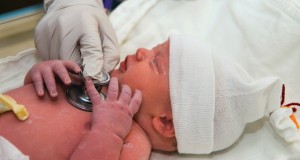 Caesarian section rates are rising across all first world nations. In many instances women are requesting caesarians even though there is no medical need for the procedure. In the UK at least this is considered to be alright, an okay practice that gives women choice.(source)
Caesarian section rates are rising across all first world nations. In many instances women are requesting caesarians even though there is no medical need for the procedure. In the UK at least this is considered to be alright, an okay practice that gives women choice.(source)
On the ‘shop floor’ of any maternity hospital midwives will tell a different story. Caesarian section is a major operation but is not considered as such by an increasing number of women who are unofficially dubbed ‘to posh to push’ by maternity staff. Many of these women are quite blunt, albeit wrong, about the reason behind their decisions. Many feel it will help them regain their figure faster, others just simply don’t want the pain of labour in order to bring their child into the world.
Increasing numbers of women opting for private health insurance seems to make them think that operative procedures are available on demand rather than based on medical need. Sadly many doctors acquiesce very easily. Litigation also plays a part in our compensation culture, with many practitioners opting to allow the section rather than ‘risk’ a natural birth. this is particularly common in women who have had difficulties before.
Plos has done a study looking at the variation in caesarian section rates across the United States. The range of those rates is startling.
From Plos:
Cesarean delivery is the most common inpatient surgery in the United States. US cesarean rates increased from 20.7% in 1996 to 32.9% in 2009 but have since stabilized, with 1.3 million American women having had a cesarean delivery in 2011. Rates of cesarean delivery vary across hospitals, and understanding reasons for the variation could help shed light on practices related to cesarean delivery.
Katy Kozhimannil, (University of Minnesota School of Public Health, Minneapolis, USA) and colleagues S.V. Subramanian and Mariana Arcaya (Harvard School of Public Health, Boston, USA) used the 2009 and 2010 US Nationwide Inpatient Sample from the Healthcare Cost and Utilization Project, a 20% sample of US hospitals, to study hospital variation in cesarean section rates. They analyzed data for 1,475,457 births in 1,373 hospitals, adjusting rates for maternal diagnoses and socio-demographics, as well as hospital characteristics like size, location, and teaching status.
They found that among all women the cesarean section rate was 33% overall and 22% among women without a prior cesarean section. Rates varied by maternal age, race/ethnicity, and insurance status, and medical diagnoses related to pregnancy and delivery. Variability in hospital cesarean rates did not decrease after adjusting for these maternal factors and hospital characteristics. They found significantly higher variation in hospital rates than would be expected, with the likelihood of cesarean delivery for all women ranging from 19% to 48% across hospitals. Among women without a prior cesarean section, the likelihood of having a cesarean delivery varied between 11% and 36% across hospitals.
They also examined lower risk women, whose likelihood varied between 8% and 32% across hospitals, and higher risk women, whose likelihood varied between 56% and 92% across hospitals. A limitation is that these hospital administrative data, while nationally representative, did not contain information on parity or gestational age, factors that influence cesarean delivery decisions. These measures are collected in other countries such as the United Kingdom but are not routinely included in US hospital discharge summaries. The authors call for these data to be routinely collected and linked to facilitate US research as well as cross-country comparisons.
The authors say:
“The findings from this analysis are consistent with studies in Arizona, in Massachusetts, and among births in US military hospitals; however, this analysis is the first to our knowledge to use a nationally representative US sample.” They acknowledge the need for future research, “Many other systems- or clinician-based factors may influence use of cesarean section in US hospitals, including liability and insurance factors, the presence and type of a hospital’s clinical training program, the role of midwifery, the presence of labor support or birth doulas, individual clinician approaches to labor and delivery management, and practices related to admission and labor management.”
Journal Reference:
- Katy B. Kozhimannil, Mariana C. Arcaya, S. V. Subramanian. Maternal Clinical Diagnoses and Hospital Variation in the Risk of Cesarean Delivery: Analyses of a National US Hospital Discharge Database. PLoS Medicine, 2014; 11 (10): e1001745 DOI: 10.1371/journal.pmed.1001745

This is interesting. I had my 2nd child as an emergency c-section due to him being in a transverse position (sideways). Since it was a vertical cut, my 3rd one was also a c-section. As someone who’s had both, I would have rather gone through the 12 hours of labor it took for my first one than have a c-section. The recovery was faster. I didn’t lose muscle strength & go up two clothing sizes after my first one, despite weight gain (that happened after the 2nd one with NO weight gain).